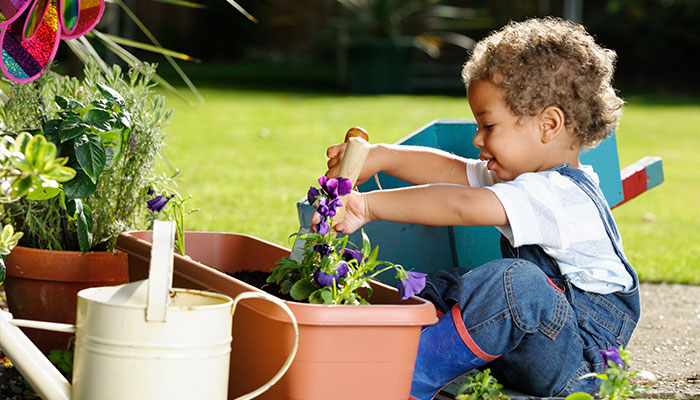While we believe that the books and resources recommended may be of value to you, keep in mind that these are suggestions only and you must do your own due diligence to determine whether the materials are appropriate and suitable for your use. PNC has no sponsorship or endorsement agreement with the authors or publishers of the materials listed.
SPRING

Seeds and Water
Children will grow a plant.

Lesson Objective
The children will conduct an experiment to determine the importance water plays in growing seeds.
Science
What You'll Need
- Small resealable plastic bags – 2 per child
- Sunflower seeds – 2 per child
- Tape
- Half sheets of paper towels – 2 per child
- Small paper plates
- Magnifying glasses – 1 per children
What To Do
Note: This experiment will take about 1 week to complete.
- Label the bags with the children’s names, two bags per child.
- Display the sunflower seeds. Ask children if they know what they are.
- Ask children if they know what a seed needs in order to grow.
- Give each child a seed on a plate and a magnifying glass. Encourage the children to examine the seeds with a magnifying glass. Ask the children what they notice about the seeds.
- Explain that they will be learning about how water affects seeds.
- For each child, in one bag, place one seed and a wet half sheet of paper towel. Seal the bags.
- In the other bag, place one seed and a dry half sheet of paper towel. Seal the bags.
- Use tape to attach the bags to a sunny window.
- Ask the children to make predictions about what will happen to the seeds.
- Check the seeds daily. Record the children’s observations.
- The seeds that were in the wet paper towel will have germinated. The seeds that had a dry paper towel will not have germinated.
Resources
Home School Resources
Home educators: use these printable lesson PDFs to teach this lesson to your home schoolers. They're available in English and Spanish.
Content Provided By
Common Core State Standards Initiative – These lessons are aligned with the Common Core State Standards ("CCSS"). The CCSS provide a consistent, clear understanding of the concepts and skills children are expected to learn and guide teachers to provide their students with opportunities to gain these important skills and foundational knowledge [1]. Visit the CCSS


